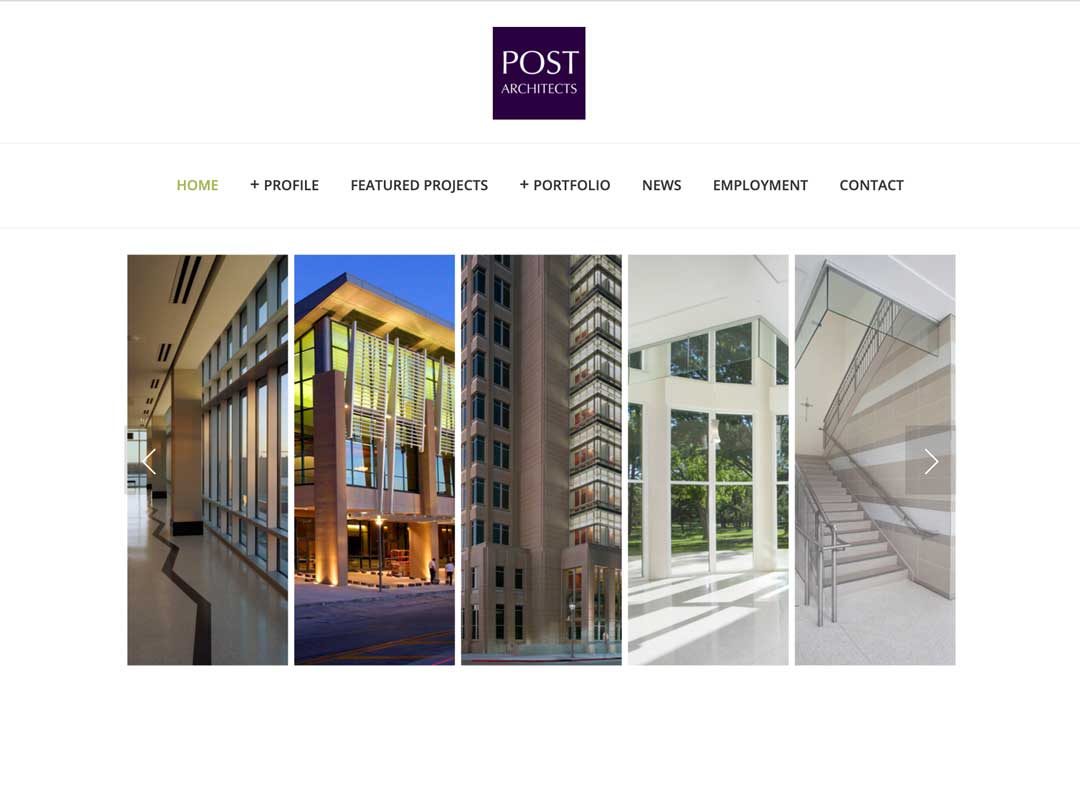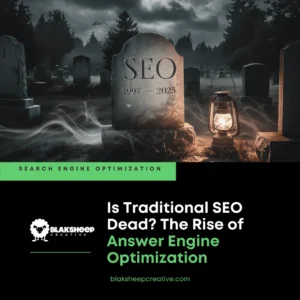In this article, we’re going to discuss SEO for Architect Websites. In 2020, it’s not enough to have a website. Sure, it can help you show off your recent projects, team, and accomplishments, but you need to make sure it’s to optimize your website for search engines.
Ready to learn how to get your website for your architectural firm at the top of the search engine results pages?
Ready? Let’s go!
What is SEO?

Before we dive into how search engine optimization (SEO) will help you rank higher to help you grow your architectural firm, we need to give you an overview of what search engine optimization is.
SEO is short for Search Engine Optimization— technical jargon for a set of methods and techniques that are used to boost your website’s rank in Google’s (and other search engines’) search results.
Now, why should architects care? Well, according to a recent article from the SEO gurus at Moz, the top 3 positions in Google’s search results account for over 55% of organic clicks, with the number one spot alone getting around 30% of the click-throughs.
Think about that. Over one-third of searchers click on the first result they see. Of course, everyone wants to be number one, so we’re going to show you five steps you can take to help boost your architect website’s ranking.
Now that you have a general idea of what SEO is and why it’s essential to continue reading to learn the steps you need to take to make sure search engines and potential clients notice your website.
Basic SEO for Architects
First, let’s talk about what your site needs to satisfy the essential SEO criteria. These technical elements are typical for all websites, irrespective of industry or niche:
Meta Information
Meta information is what tells search engines (and users) what your website or page is about. By adding pertinent meta information, you make it easier for spiders (not real ones, this is what the things that crawl the internet by search engines are called.) to understand your pages’ content better.
Crawling the entire web is resource-intensive and expensive. So, by helping the bots (another name for spiders), you make it more likely to hang out on your site for a little longer and analyze all of your pages.
Here are some types of metadata you’ll want to pay close attention to:
- Meta Title Tags: Make sure that you have defined a clear and concise meta title for each page. These are critical because your meta title tags contribute keywords and are displayed in Google’s search results.
- Meta Description Tags: Ensure that you have included a meta description on every page. While meta descriptions are said to have no SEO value, this will show up under your page’s title in the search results. Better put, this is the summary of your page that entices users to click through and visit your page.
- Page Headings: Make sure you have headings on each of your website’s pages. These are typically headers, sub-headers, and page titles (i.e., your project’s title). We’ll talk about that a little later.
We’re going to keep our description of technical SEO brief for now, but if you want to get more in-depth with your SEO knowledge, check out our post on Super Easy SEO for Small Businesses.
Now, let’s talk about some necessary items that your website needs to help your architectural firm show up higher than your competition in the SERPs (search engine results pages).
Keywords
Keywords are one of the foundational elements of SEO. These terms are what searchers enter into the search engines and are virtually questions posed by users that the search engines intend to answer.
Much like your site’s metadata mentioned above, keywords also help search engines determine your pages’ content and relevance to the search term(s).
For example, if you’re a residential architect and your project descriptions include words like “home,” “residence,” “single-family dwelling,” and so on, naturally, you’ll likely rank higher for those search terms than say, “auto dealership” or “restaurant.”
The good news is that when you’re writing your page’s content (copy), these keywords should flow naturally, as you’re the expert in your field and are only talking about what you know.
But, if you use these few tips about keywords, you’ll get an edge up on the competition:
- Perform keyword research: Depending on your niche or locale, some keywords might be more competitive than others. Perform keyword research to see which ones are less competitive and start by trying to rank for those. Consider less competitive long-tail keywords. Long-tail keywords typically have less search volume but yield better results in conversions. Also don’t get wrapped up in competition vs. volume, focus on those most likely to bring tou conversions.
- Mix your keywords in: Sprinkle 4–5 keywords or phrases into your project descriptions and throughout your website copy, making sure they emphasize your expertise and address your current clients. Please don’t overdo it! This is called keyword stuffing and is a no-no with search engines. Let your keywords fit naturally.
- Use your keywords in sentences: Keep the keywords contextual by using them in sentences. Use synonyms as much as possible. This is called latent semantics and helps Google realize that you know what you’re talking about.
- Add geo modified terms: Make sure to add the city, state, and geographical information in your project descriptions, as this will help boost your local rankings.
Here’s a screenshot from a keyword research tool that we use that shows you the difficulty of the search phrase “baton rouge architect.” As you can tell that exact phrase is a moderately competitive “keyword.”

Now that you know what to keep in mind while you research content for your architectural website, let’s discuss how often you should post to your blog and what the posts should address.
Include both Images and text
Even though the architecture field is visually oriented, you must include enough text for search engines (and users) to understand you and your pages.
Of course, you want to show off your recent projects with stunning photos, but make sure there’s some textual content in there as well. Also, add alt-tags to your images to let search engines and visually-impaired users know what they contain.
Structure your text
Think back to earlier when we discussed headings as a part of your meta information. Now let’s go into more detail about how headings should flow in your text.
Each page should have one (and only one) H1 heading. Your H1 heading should describe the main subject of the page to help Google understand the topic of that particular page or post.
For example, your “about us” page should have one H1 heading, perhaps “About Our Firm,” “About [Business Name],” etc.
As your content gets more detailed, create H2s and H3s as necessary.
For example, let’s say you’re an architectural firm in Louisiana with two locations, one in Baton Rouge and one in New Orleans. Your heading structure might look something like this: About Us <h1>
Locations <h2>
Baton Rouge <h3>
New Orleans <h3>

Now that you’ve got a general idea of how you should structure your headings, let’s talk about your pages and posts’ meat and potatoes – the content (or some call it copy).
What content provides the best SEO for an Architectural Website?
Like we said earlier, your website’s text is what lets search engines and users understand what your pages are all about. After all, it’s the images and text that tell your target audience about your firm, recent projects, and services.
You can look at our list of top 40 architecture websites for inspiration.
Here are some ideas for content to include on your architectural firm’s website:
The Usual Pages
At a minimum, your site should have pages that tell the user about your business, the services you provide, and how to contact you. The specific pages you should have are:
- Home – the page where you give an overview of your company
- About – your company’s history, members, etc.
- Services – what architectural services you provide and some of your recent projects.
- Contact – name, address, phone number, email address, and other ways to get in touch with your firm. Consider adding links to your social media profiles.
These pages mentioned above are just the bare backbone of your site. You can add more pages and subpages as the need arises.
Take a look at the image below from Post Architects, one of the leading architecture firms here in Baton Rouge, Louisiana.

Also, provide internal links from each page to another to help crawlers navigate your site easily. Internal links ensure that all of your pages get indexed and also helps with the overall user experience.
Protip: Have a blog page with regularly updated posts
Although we haven’t written a post about what content an architect can post about on their blog, you can find the basic idea of what to write about in our post about 10 Creative Plumbing Company Blog Post Ideas. Just adapt the concepts to the architectural field.
By providing high-quality content on these pages, they will naturally contain words and phrases related to your services, increasing your chances of ranking for those keywords.
It’s vital that you only optimize one post or web page for one subject or keyword. Optimizing one page for keywords that are not related confuses Google about the main topic of the page. Plus, you stand the chance of your website’s pages competing with each other in the SERPS (called cannibalization).
Architect Search Engine Optimization Summary
This post is just a general overview of architect website SEO and how to optimize your website’s content to rank higher in search engine rankings than other architectural firms.
There’s still plenty of elements of Search Engine Optimization and digital marketing that you can use to grow your firm and increase your profits.
Read our blog posts to learn more about digital marketing and SEO. If you have questions that aren’t answered on them, or need help optimizing your existing website, or need a custom website for your architect business, contact us or drop a line in the comments below. We’d love to help you grow your architectural firm by providing you with affordable small business SEO and digital marketing.
















































